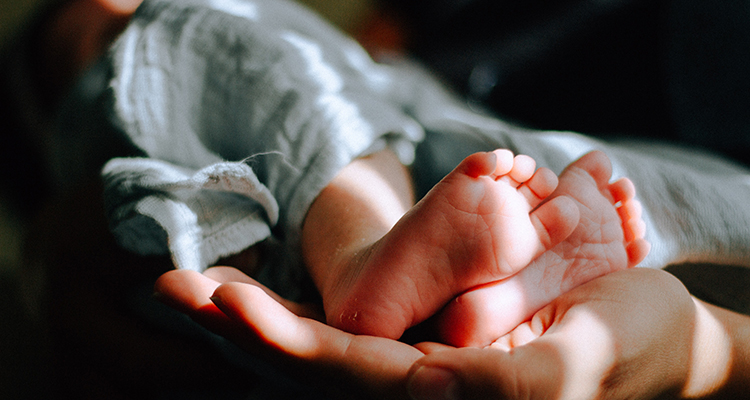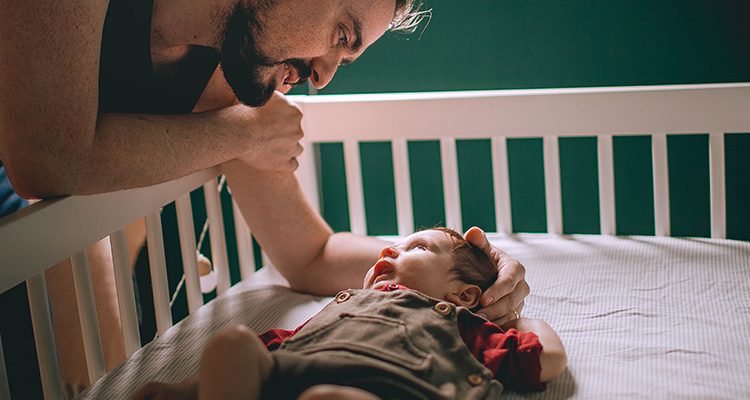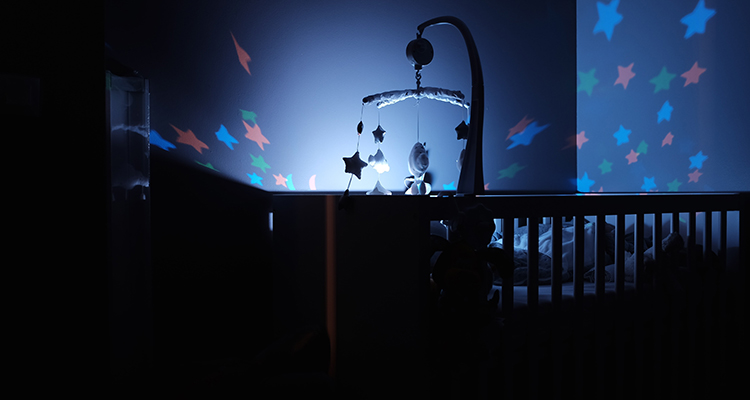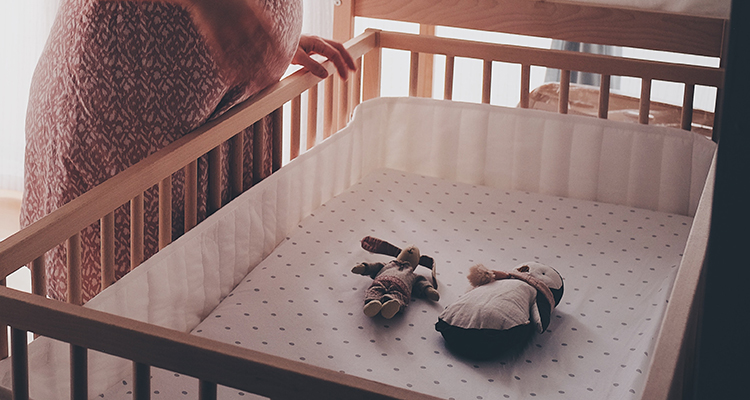Sleep Training for Babies & Toddlers

“There was never a child so lovely but his mother was glad to get him to sleep.”
~Ralph Waldo Emerson
The term “sleep training” has unfairly been linked to letting your baby or toddler cry it out or “self-soothe.” And, while it may involve these methods, there is so much more to sleep training then letting your child “tough it out.” Remember, the ultimate goal is to teach your baby or toddler how to fall (and stay) asleep without your assistance. Most parents want their “littles” to peacefully fall asleep on their own without having to be “coddled” – i.e. rocked, sung to, nursed, etc. Independence is the key to having a successful sleep training experience – for you and your child.
For some, sleep training may feel unfair, unkind, and brutal, but for others (namely weary parents) it can feel like a blessing. Truth-be-told, you’ll find both supporters and critics on this topic. Supporters say it’s healthy and “normal” for babies and toddlers to wake up at various times of the night. And, truth-be-told, there is still no consensus, among child counselors and psychologists, on what is too much crying and when you should comfort your child. This can be confusing to parents, who simply want a good night’s rest.
The struggle of getting your baby or toddler to fall and stay asleep throughout the night is real. And, although accomplishing this task may be super easy for some parents, for others it can be a real nightmare! More specifically, it can feel like a never-ending battle charged with a wide-range of emotions – i.e. sadness, frustration, anger, distress, etc. However, the good news is help on the way. If you follow the tips in this article, your baby or toddler will be peacefully slumbering in no time at all.
What is Sleep Training?
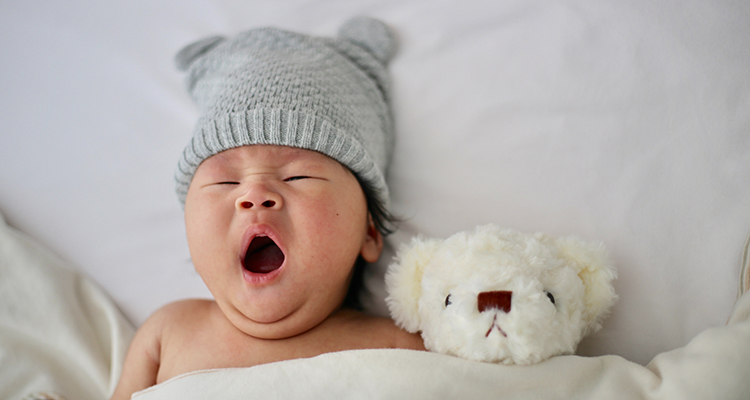
Sleep training is designed to teach your baby or toddler how to fall asleep without your help. This involves putting your child down for bed – while still awake and allowing him or her to fall asleep without you rocking, singing to, nursing, or cuddling him or her. Sleep training also teaches your “little one” how to fall back asleep when he or she awakens during the night (which is entirely possible).
Keep in mind, however, that night weaning and sleep training are not exclusive. In other words, you can still nurse your baby or young toddler a couple of times a night – and still sleep train him or her at the same time. How? The best way to handle this situation is to ask your child’s pediatrician how to successfully wean your child (making sure he or she is getting the proper nutrients at night), while sleep training him or her. So, as you can see, sleep training isn’t as cruel and unloving as it may initially appear. Your child’s best interest should always be at heart.
Understand, however, that sleep training does not involve letting your child cry for hours on-end at night. That is counterproductive to you and your child. Neither one of you gets any sleep, resulting in severe fatigue and crankiness the next morning. That is not the goal of sleep training. The good news is you retain control of the sleep training process, so you can decide how much crying is tolerable for you – before you step in and comfort your child.
And, even if you think some sleep training methods are either too harsh or simply won’t work for your baby or toddler – that is perfectly okay. Just try the one(s) you think may actually work for your child. Sleep training involves many methods so you have a choice of which one(s) you want to try.
Contrary to popular belief, sleep training will not harm your baby or toddler in any way and it also will not cause attachment issues that follow your child as he or she ages. In fact, studies show that sleep training does not heighten a child’s risk of emotional or behavioral issues later in life. Thus, researchers have concluded that sleep training is not only healthy and safe, but that getting proper sleep is essential for babies’ and toddlers’ growth and development.
When Should I Start Sleep-Training My Baby?
Child development experts suggest that parents start sleep training their babies between 4 and 6 months, give or take. Why between these ages? Well, primarily because during these ages, a healthy baby should be old enough to sleep for 6-8 hours each night without waking up to nurse, but not necessarily old enough to make a sleep association between waking up and getting comfort from a parent.
Content
Pre-Sleep Training Tips for Babies (0-12 months)

Before you contemplate “sleep training” your baby, there are some things you must consider. For instance, it is important that you develop a regular bedtime routine with your child and consistently follow it – i.e. putting him or her to bed at the same time each night. FYI: Most child development experts recommend that this time be around 7 or 8pm depending on the child’s age. So, think earlier instead of later for a bedtime.
Around 8 weeks old, consider laying your child down, while he or she is a bit drowsy (but still mostly awake). Use this time as “pre-sleep training practice” for the real thing. Understand that your baby may be fussy at first – this is to be expected. Also, make sure your child has been awake for at least a few hours before bed. Keep in mind that a child, who has too much activity throughout the day or shortly before bed or one, who hasn’t had enough activity throughout the day may be harder to sleep train.
It is also important that you establish a bedtime routine that is calming and consistent – i.e. a feeding, warm bath, pajamas, a tuck-in, one or two books or a couple of songs, soothing music (optional), and sweet kiss goodnight. Most experts also agree that it is best to begin the bedtime routine with a feeding, so your baby does not directly associate being fed with falling asleep.
However, you don’t want your baby to fall completely asleep during the bedtime routine, rather the goal is to relax your baby so he or she can fall asleep at the right time. And, although too much stimulation can prevent your baby from falling asleep, too little activity can have the same effect, so it is important that you find that right balance, so your baby is tired enough to fall right to sleep once he or she is put down.
Listed below are tips to help you start the sleep training process:
- Understand the terminology
Before you officially start the sleep training process for your baby, it is important that you understand the terminology. In other words, it’s important that you know what “falling asleep” and “sleeping throughout the night” really means.
Researchers define “falling asleep” and “sleeping throughout the night” as falling asleep around 7 or 8pm and sleeping between 5 to 8 hours without waking up – at 6 months of age. This is contrary to popular belief that says that children at 6 months must sleep 12 hours straight.
The truth is many 6-month-old babies are still night feeding at this time. In fact, night feedings may continue until 12 months of age for some babies, which means they’ll probably still be waking up once or twice at night to feed until this age.
- Develop realistic sleep training expectations
Next, you’ll want to develop realistic sleep training expectations. Take into account any possible issues your little one may experience during sleep training and prepare for them. For instance, if your baby is experiencing colic or acid reflux (the main reasons for impaired sleep) and/or if he or she had complications at birth or was born prematurely, your baby may experience sleep disruptions. If this is the case you may need to consult your child’s pediatrician for guidance before starting a sleep training program.
- Be patient
In other words, be patient with your baby and the sleep training process. Sleep training isn’t a quick or easy process, so you will need a good dose of patience for the training to be successful. Keep in mind, however, that most babies “sleep train” on their own between the ages of 4 and 6 months, but if “sleep issues” persist – it is probably time to introduce a sleep training program into the mix. Babies naturally sleep train between 4 and 6 months? Yes, most babies do this on their own around this time.
Wondering why? Well, because during this time, a baby’s circadian rhythms become more stable. Is your baby staying awake longer during the day? And, does your baby signal, through fussiness, crying, whining, or dozing-off that he or she is tired and wants to go to bed? Has your little one been wearing down earlier than before – between 5 and 8pm? Is your baby sleeping longer now? If the answer is yes to one or more of the questions listed above, then your child is learning how to regulate his or her circadian rhythms.
Also, keep in mind that between 3 and 5 months of age, babies start showing “sleep readiness.” What does that mean? It means children in this age group start to “self-soothe,” suck on their hands and feet, pull up their hands to their stomachs, and snuggle into the parent’s armpits to block out external stimulation and noise.
Moreover, babies at this age typically become whiny, roll on their sides or bellies, and cry to comfort themselves when mommy and daddy aren’t readily available. This behavior is innate and designed to help your baby regulate his or her emotions.
*Only when your baby has reached the above milestones, should he or she start the sleep training process.
- Develop a consistent bedtime routine
You’ll also need to develop a consistent bedtime routine before you start the sleep training process. When should you start an official bedtime routine with your child? Between 6 and 12 weeks of age. The bedtime routine should involve plenty of interaction and cuddling with your child approximately an hour before bedtime.
If your baby gets plenty of attention from you before bed, he or she is less likely to fuss (too much) when it’s time for him or her to go to sleep. Understand that quality sleep not only improves everyone’s temperament, but also strengthens the bond between you and your baby.
So, spend the time before bed, snuggling with your baby, talking with him or her, singing songs or reading books, and reassuring him or her that you will always be there – even if you are not physically in the room. End the evening by telling your baby how much you love him or her and giving him or her a goodnight kiss. Then, turn off the lights and close the door as you leave.
Note: Having a consistent and stable wake-up time in the morning can also help your baby fall asleep more soundly at night.
- Pay attention to your baby’s sleep patterns
Before your start sleep training pay close attention to your baby’s sleep patterns. Once you put your baby to bed for the night, does he or she awaken every 30 to 50 minutes? Once awake does baby need assistance falling back to sleep? Or, does your baby awaken every 2 hours during the night and need help getting back to sleep? When your baby awakens is it because of hunger?
If the answer to any of the questions posed above is yes, then try gently patting your baby on the back and hushing him or her in his or her crib – instead of immediately picking him or her up. This is an especially good idea, if you don’t feel that your baby awakened due to hunger. Give your baby a chance to “self-soothe” on his or her own – without your assistance. This may involve allowing your child to whine or cry for a few minutes before you move into soothe him or her.
Note: Experts recommend comforting your baby if he or she continues to whine or cry longer than 15 minutes.
- Be prepared for sleep regression
Beware – your child will most likely experience sleep regression at some point during sleep training. So, mentally prepare for some long nights in the midst of it. Sleep regression is normal and should be expected.
What could this look like? Well, a normally fantastic sleeper could suddenly start waking up several times at night. This could occur for a variety of reasons, such as illness, teething or other developmental milestones like walking or talking, traveling, or getting too much or not enough stimulation throughout the day.
When does sleep regression typically occur? Well, it really depends on the child, however, it can occur as early as 3-4 months, as a baby begins to regulate his or her sleep/wake cycles and move from a “newborn sleep cycle” to a “baby sleep cycle.” Keep in mind that your baby is constantly learning new things – i.e. information, skills, etc. And, as a result, he or she may begin to link going to sleep with your physical presence. This is called a sleep association.
Note: Only after your baby has moved past these “changes” should you begin or resume sleep training. Typically, there are two periods in which babies tend to experience the highest rates of sleep regression – 12 months and between 18 and 22 months.
At 12 months, a baby starts to walk and is teething – both of which can interrupt sleep cycles. Between 18 and 22 months, a toddler begins to learn how to speak, which can also trigger sleep regression.
These are big developmental milestones that can prevent children from falling and staying asleep at night. During these periods, children can become fussier and need more parental attention at night.
Sleep-Training for Babies (0-12 months)
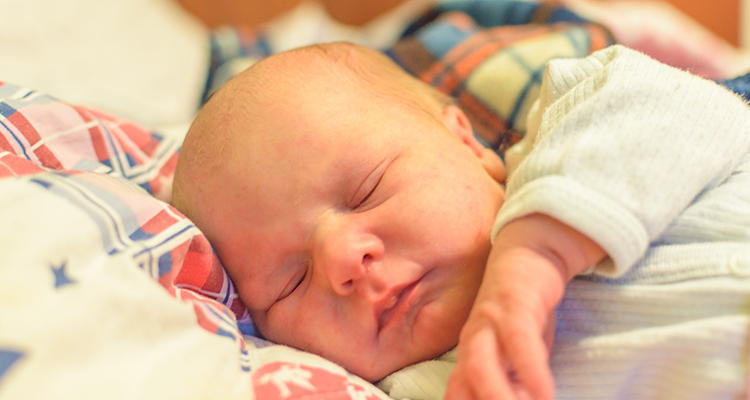
Your baby has passed the hallmarks needed to officially begin the sleeping training process – now what? Well, as mentioned above, if your baby is at the point that he or she needs to be rocked or cuddled by you, if he or she awakens during the night for a feeding or more cuddling before falling back asleep, and if your baby is at least 4 months old, he or she is most likely ready to start this new journey.
Keep in mind that babies, at this age, should be able to fall asleep and go back to sleep (if they awaken during the night) independently by way of “self-soothing.” In fact, studies suggest that sleep training can reduce pre-bedtime whining and crying and encourage “bedtime fading” – in babies and toddlers 4 months old and older. Thus, researchers have concluded that sleep training is a healthy way to teach your child how to fall asleep on his or her own.
Hopefully, this provides you with a bit of comfort knowing a little crying will not irreparably harm your “little one” and may actually help him or her sleep better at night.
If sleep training fills you with anxiety and dread, fret no more, because it’s not as taxing and complicated as it may initially present. No, once you and your child find your stride, it will happen quickly. Even better? It won’t involve listening to your child wail all night either!
If you are ready to begin the sleep training process, keep reading for the best tips to help you and your child get a good night’s rest.
- Let your baby cry
One way to sleep train your baby is to let him or her cry. That sounds harsh. I get that, but it may be the best way to sleep train some babies. The “cry it out” method involves letting your baby cry (without any comfort or assistance from you) until he or she falls asleep. How does this method work? The first step is to ensure that your baby has been fed, has gone to the potty, and is safe in his or her crib or toddler bed.
Why is this important? Because, if your child has his or her needs taken care, there will be no need for you to return to his or her room until morning, until the next feeding time, or unless there is an emergency. With consistency and a little patience, you baby will eventually learn how to “self-soothe” and begin falling asleep on his or her own.
How long does it typically take for a baby to sleep train from the “cry it out” method? About a week. The good news is that letting your baby cry will not cause irreparable harm to him or her and may help you all get some much-needed rest. Remember, however, that this is just one of many sleep training methods you can try to help your baby sleep better at night.
- Wait and see
The “wait and see” sleep training approach involves adhering to your normal bedtime routine, and then putting your baby in his or her crib or toddler bed, while still drowsy. In other words, your child should be awake, but sleepy.
If your child whines or cries, wait about five minutes to see if he or she “self-soothes” or calms himself or herself down, and falls asleep. If that doesn’t happen, go into your child’s room and comfort (i.e. rocking, singing, cuddling, hushing, patting, etc.) him or her until he or she becomes sleepy again. Once your baby is drowsy again, place him or her back in the crib or toddler bed.
If your child wakes up again (which is likely to happen), repeat the process until he or she falls and stays asleep. How long does it typically take for this method to work? It can take between 14 days and 8 weeks for your baby to get the hang of “self-soothing” without your assistance. But the good news is eventually your “little one” will catch on.
- Put your baby to bed and check on him or her during intervals
Not a fan of letting your baby cry without coming to his or her aid? I get it. Maybe, the Ferber method is more your style. What is the Ferber method? It’s a type of check-and-comfort approach to sleep training. This method involves letting your baby cry for a pre-determined amount of time before checking on him or her.
How does it work? Well, with this method, you place your child in his or her crib or toddler bed, while sleepy, but still awake. If your baby starts to whine or cry, do not immediately run in the room to comfort him or her. Rather, let him or her cry for at least 5 minutes but for not longer than 15 minutes. Only enter the room at certain intervals. Then, check on your child for 1 minute at a time.
While in your child’s room, gently pat or rub his or her back, but do not pick your child up. The purpose of these timed intervals is to teach your baby how to “self-soothe.” The goal is to gradually make these intervals (the amount of time between when you put your baby down for bed and when you re-enter the room) longer.
Eventually, your baby will catch on and start to put himself or herself to sleep or back to sleep. After a while, your baby will be a pro at “self-soothing” and falling asleep, so there will be no need to have these interval checks at all.
Caution: Like the “cry it out” sleep training method, this approach also involves lots of whining and crying – at least at first. So, patience is the key. This approach has a 95% success rate after a week. However, if your child is still crying for long stretches of time after several weeks of interval checks, then take a break from sleep training and try again in a couple of weeks or months.
- Use the “fade out” approach
If the sleep training methods above don’t appeal to you, you may want to try the “fade out” approach. Does your child cry for hours before finally falling asleep? If so, it could be that your little one’s body simply isn’t ready to “wind down” at that specific time. In other words, maybe the bedtime your chose for your child is too early.
“Bedtime fading” involves gradually decreasing the amount of time you spend in your baby’s room when putting him or her to bed. The “fade out” approach helps your child regulate his or her circadian rhythms and teaches him or her how to fall asleep – without your assistance.
How does it work? Well, the first step is to pay attention to your little one’s cues, such as yawning, rubbing his or her eyes, turning away from bright lights or covering his or her ears to block out noises, and becoming fussier than normal. Once you are sure your baby is tired, put him or her to bed. Then, leave the room.
If your child does not fall fast asleep or if he or she cries for more than 15 minutes, re-enter the room and comfort him or her (picking him or her up, rocking him or her, or doing a feeding) for a set amount of time – i.e. 5, 10, 15, 20, 25, or 30 minutes. After that time has elapsed, put your baby back in his or her crib or toddler bed and leave the room.
Gradually shorten how long you stay in your child’s room until he or she does not need your presence to fall asleep. If your child isn’t sleeping because his or her bedtime is too early, allow your baby to fall asleep naturally. Then, slowly start moving his or her bedtime up 10-15 minutes every few nights until your baby’s body starts to wear down at the desired bedtime.
The good news is that “the fade out” approach is usually successful after a few nights of consistent sleep training.
- Pull out your bedtime resources and tools
Lastly, pull out your bedtime resources and tools. “Newborn and infant swaddling” can be a blessing during those initial months. However, once your “little one” starts rolling from side-to-side, it is no longer safe to keep him or her swaddled at night. Once your child hits this developmental milestone (turning over), you may want to transition him or her to a sleep sack. A sleep sack offers your child the same warmth and comfort of swaddling, but with the freedom to use his or her hands.
Another benefit of a sleep sack is that it prevents your child from crawling out of his or her crib, while you sleep. A lovey is another self-training tool at your disposal. What is lovey? It a piece of soft cloth, resembling a mini blanket that often has a miniature stuffed animal attached to it. It is meant to be a source of comfort to a young child.
If you opt to use a lovey to aid in sleep training make sure it’s non-toxic and breathable. Why? Because young children love to put lovies in their mouths and over their faces. Other tools that may help the sleep training process include: black-out curtains, soft music or a sound machine, pacifiers, and/or a night light.
What If My Baby is a Belly Sleeper? Is Belly Sleeping Dangerous? Will It Affect Sleep-Training?

Yes and no – on both accounts.
With the threat of sudden infant death syndrome (SIDS) looming for young children, especially those 12-months-old and under, it just makes since that your baby flipping on his or her belly and falling asleep face-down would worry you. What is SIDS? According to the Mayo Clinic, SIDS occurs when a child that is less than a year-old dies suddenly and unexpectantly during sleep and there is no defined cause for the death.
So, yes, SIDS can be dangerous, but this condition may occur regardless of whether your baby sleeps on his or her stomach, face-down or on his or her back. In fact, researchers suggest that imbalances or defects in the parts of a child’s brain that regulate breathing and REM sleep may contribute to SIDS.
The good news is as long as your “little one” is not swaddled after a certain time and the bed is safe – i.e. no cloth crib bumpers, loose blankets, or stuffed animals, the risk of SIDS declines. However, understand that SIDS can occur at any time to any child – with or without explanation. So, it’s best to purchase a baby monitor so you can keep a close eye on your baby, while he or she sleeps.
But, if your child flips on his or her stomach, do not turn him or her over. Why not? Because infants and young children typically move around all night long, so even if you flip your child over, there is a good chance he or she will eventually flip back onto his or her stomach. Keep the baby monitor close by (with the volume up) and frequently check on your “little one” throughout the night – while he or she is asleep.
Will belly sleeping affect sleep training? It may…or may not. It depends on the child. But any disruptions can throw-off a child’s sleep schedule, even those in the midst of sleep training. If this occurs, be patient with your child and yourself. Temporarily stop sleep training, so that your “little one” time can “recalibrate” his or her sleep/wake cycles. Then, restart sleep training in a few days.
What About Naps? Will Taking a Nap Make it Harder for My Baby to Sleep Train?
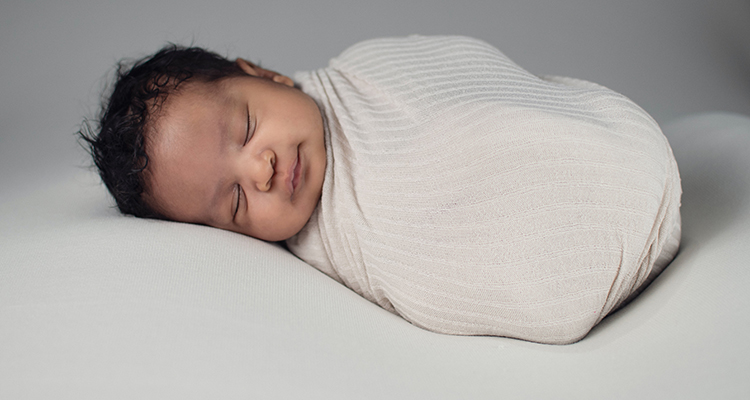
Possibly, but it really depends on the individual child.
Keep in mind that naps do not always take place in a crib or toddler bed. In fact, some of the best naps take place in the car, while your child is in his or her car seat, while being rocked or fed, or while playing on the floor (toddlers). A baby, who is between 4 and 7 months, may go from napping most of the day (newborn stage) to only taking between 3 and 4 naps a day.
And, by the time a baby is between 8 and 9 months, he or she may only be napping twice a day. So, shoot for no more than four 30-45-minute naps once your child turns 4 months-old and reduce that time down to no more than two 45-60-minute naps once he or she turns 8-months-old.
If possible, place your child in a crib, bassinet, co-sleeper or toddler bed for his or her nap. Why? Because studies indicate that your baby is safest when he or she is napping on a steady flat surface during naps. Don’t forget to add some activity and fresh air into your child’s daily routine (i.e. going for a walk or to the park). The exercise and stimulation will help him or her sleep more soundly at night.
Note: If you plan to use a “nap approach” to sleep training, be prepared for more whining and crying at bedtime. This is normal. You can use the “nap approach” to help your child sleep better at night or you can use the “nap approach” to help your child sleep better during naptime.
Some experts warn against trying to do both at the same time – nap sleep training and bedtime sleep training. These experts recommend working on sleep training for naps first and once your child has a good grasp on that, move on to sleep training for bedtime. However, other experts recommend doing nap and bedtime sleep training together – because the end goal is the same for both events. It is important to find out which approach works best your child.
Lastly, always plan your child’s naps for early in the afternoon (1pm, 2pm, or 3pm). Do not go past 3pm or you may have a hard time getting your child to go back to sleep at the desired time.
How Long Will It Take to Sleep Train My Baby?
If you use the Ferber (interval checks) or the “cry it out” method, your “little one” will probably whine and cry for 4 or 5 nights before he or she starts to “self-soothe” and fall asleep independently. If you opt for one of the other sleep training methods like the “wait and see” or “fade out” approach, it may take a little longer for it to click for your baby.
Also, keep in mind that a sleep training method may work for one child but not another. So, you have to “feel out” which method will work for your child. The key to a successful sleep training process is being consistent with the approach for at least 14 days to determine if it is working.
When Should I Become Worried?
If you start sleep training and it triggers an intense reaction in your child and/or negatively affects your child’s emotional state and behavior, it is time to consult your baby’s pediatrician. Your child’s doctor will be able to give you advice on the best way to handle the change in behavior and proceed with the sleep training process.
Also, if you adhere to a sleep training method for more than 14 days, but can see no progress in your child’s sleep patterns; consult your child’s pediatrician for guidance. Lastly, if your baby begins to vomit or show signs of anxiety shortly after staring sleep training, contact his or her pediatrician immediately to rule out other health conditions or ailments.
Sleep Training for Toddlers (1-3 years old)
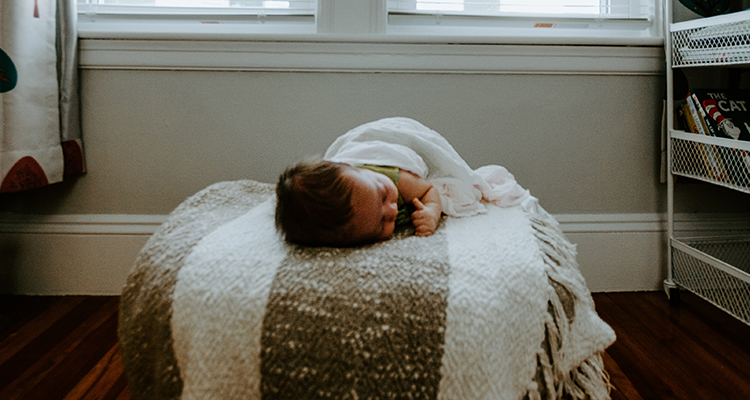
If your toddler’s sleep patterns are leaving you exhausted you aren’t alone. There’s probably not a parent around who has not experienced what you’re going through at one point or another. The good news is the distress (for you and your toddler) is only temporary. It will eventually pass. But, when will it pass? Well, the truth is, it depends.
Even if your baby sleeps well, it may be another ballgame once he or she becomes a toddler. Why? Because, honestly, going to sleep is the last thing a toddler wants to do. Unfortunately, researchers have been unable to pinpoint the true cause of this “change” in sleep patterns during toddlerhood. Most, however, believe that it stems from natural child development. But, finding the right sleep training method for your child can make a world a difference in everyone’s attitude and behavior.
Do the Same Methods Used to Sleep Train a Baby Also Work for a Toddler?
Absolutely!
Yes, the same sleep training methods used with infants (0-12 months) can be used with toddlers (1-3 years old). Wouldn’t it be nice, if there was a universal sleep training approach that worked for every child? Unfortunately, a universal sleep training method doesn’t exist. The good news is sleep training methods used during infancy can be used during toddlerhood to teach your “little one” how to fall asleep on his or her own. But, just like in infancy, you’ll probably have to experiment to find the best approach for your toddler.
How Can I Get My Toddler Out of My Bed – And into His or Her Own Bed?
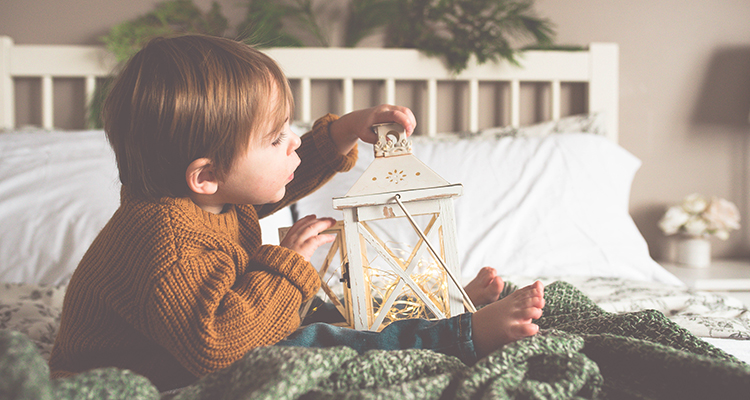
First, understand that there is no magic timetable of when your toddler will be ready for his or her own bed. It really just depends on your child’s temperament and maturity level. However, most toddlers transition into a toddler bed between 1 and 4 years old. Your toddler is ready to move out of your bed into his or her own bed if he or she is climbing out of the crib and/or if he or she is potty-trained and needs to get to the potty when the urge hits.
Keep in mind that your toddler probably won’t stay in his or her bed – at least not at first. What does that mean? It means that your child will probably walk around his or her room, mess with things, flip the lights off and on, call for you, etc. Fortunately, this behavior will temper down once your toddler gets used to his or her new set-up.
Listed below are a few tips that will make sleep training your toddler easier:
- Place your child’s toddler bed in a similar position as his or her crib. And, try to keep the decor (i.e. curtains, wall color, decorations, bedding, set-up, etc.) the same or similar.
- Gradually transition your toddler into his or her own room and bed by letting him play and/or nap in the room for a couple weeks before he or she moves in permanently.
- Postpone sleep training or transitioning into a new room and bed, if your toddler is in the midst of potty-training or another developmental milestone like starting daycare or preschool, or expecting a new sibling.
- Constantly use positive reinforcement, but do not make “deals” with your toddler. In other words, take bribery off the table. However, you can develop a “reward system” for your toddler to encourage him or her to remain in bed. The “reward” should be something small like a “hot wheel car” or a sticker.
- Make sure your house is thoroughly child-proofed. Once your child is out of his or her crib and in a toddler bed, he or she will most likely have free reign of your house, so make sure have potentially dangerous items (i.e. medications, knives, scissors, etc.) locked up.
Summary

If you are unsure about sleep training, consider your child’s current developmental needs. Once your child hits 11 or 12 months, he or she probably won’t need feedings throughout the night, but he or she will need a good night’s sleep to function properly the next morning.
Consistent sleep is a hallmark for healthy development and a good attitude and behavior. If you are spending night-after-night struggling to get your child to sleep, it is time to try something new. That something new may be sleep training.
Understand that as your baby grows older, his or her sleep patterns will most likely change, so it is important that you alter his or her wake-up time, nap time(s), and bedtime to accommodate his or her ever-changing needs. Your child will sleep better at night if you become more in-tune with his or her natural sleep/wake cycles.
While a common sleep training myth is that once you complete it, you’ll never have to deal with child who won’t go to or stay asleep. That is not true. Your child may have ups-and-downs in his or her sleep patterns throughout his or her life. This is to be expected.
But, having a good sleep training process in place for those bumpy nights can make a world of difference in you and your child’s quality of sleep. And, although not every sleep training method will work for every child, experts agree that a good night sleep can benefit a child’s health and development in a variety of ways.
References
- Price, A. M. H., Wake, M., Ukoumunne, O. C. & Hiscock. H. (2012). Five-year follow-up of harms and benefits of behavioral infant sleep intervention: Randomized trial. Pediatrics, 130(4), 643-651. Retrieved from https://pediatrics.aappublications.org/content/130/4/643
- Gradisar, M., Jackson, K., Spurrier, N. J., Gibson, J., Whitham, J., Williams, A. S., Dolby, R., & Kennaway, D. J. (2016). Behavioral interventions for infant sleep problems: A randomized controlled trial. Pediatrics,137(6). Retrieved from https://pubmed.ncbi.nlm.nih.gov/27221288/
- Sleep.org. (2021). Everything you need to know about sleep training. National Sleep Foundation. Retrieved from https://www.sleep.org/sleep-training-babies/
- Peters, B. (2020). What time should you go to sleep based on your age? Very Well Health. Retrieved from https://www.verywellhealth.com/what-time-should-you-go-to-sleep-4588298
- Carianna. (2019). How to craft the perfect bedtime routine. All the Sleeps. Retrieved from https://allthesleeps.com/bedtimeroutine/
- Marcin, A. (2020). Everything you need to know about the cry it out method. Healthline. Retrieved from https://www.healthline.com/health/baby/cry-it-out-method
- Gradisar, M., Jackson, K., Spurrier, N. J., Gibson, J., Whitham, J., Williams, A. S., Dolby, R., & Kennaway, D. J. (2016). Behavioral interventions for infant sleep problems: A randomized controlled trial. Pediatrics, 137(6), e20151486–e20151486. Retrieved from https://doi.org/10.1542/peds.2015-1486
- Field, T. (2017). Infant sleep problems and interventions: A review. Infant Behavior and Development, 47, 40–53. Retrieved from https://doi.org/10.1016/j.infbeh.2017.02.002
- Taylor, M. (2020). What is the Ferber method of sleep training? What to Expect. Retrieved from https://www.whattoexpect.com/first-year/sleep/ferber-method-sleep-training/
- WebMD. (2021). What is the Ferber method of sleep training? Retrieved from https://www.webmd.com/parenting/baby/qa/what-is-the-ferber-method-of-sleep-training
- Lagomarsino, K. (2020). The Ferber method for sleep training: A parent’s guide. Parents. Retrieved from https://www.parents.com/baby/sleep/basics/the-ferber-method-explained/
- Dewar, G. (2020). Bedtime fading: An evidence-based, step-by-step guide (with examples). Parenting Science. Retrieved from https://www.parentingscience.com/bedtime-fading.html
- Baby List. (2021). More than just cozy, sleep sacks are a safer alternative to blankets in your little one’s crib. Retrieved from https://www.babylist.com/hello-baby/best-sleep-sacks
- Strong Beginnings. (2018). What is a sleep sack? Everything you need to know for safe sleep. Retrieved from https://strong-beginnings.com/2018/10/31/what-is-a-sleep-sack-guide/
- Mayo Clinic. (2020). How to swaddle a baby. Retrieved from https://www.mayoclinic.org/healthy-lifestyle/infant-and-toddler-health/multimedia/how-to-swaddle-a-baby/sls-20076006
- Platt, E. (2021). 6 soothing baby loveys they’ll truly love. The Bump. Retrieved from https://www.thebump.com/a/baby-lovey-blankets
- Mayo Clinic. (2020), Sudden infant death syndrome (SIDS). Retrieved from https://www.mayoclinic.org/diseases-conditions/sudden-infant-death-syndrome/symptoms-causes/syc-20352800
- DeJeu, E. (2020). How and when to nap (sleep) train your baby or toddler, The Baby Sleep Site. Retrieved from https://www.babysleepsite.com/baby-naps-2/nap-training-how-and-when/#:~:text=Do%20nap%20training%20and%20night%20training%20together%3A%20Some,while%20it%E2%80%99s%20happening%2C%20but%20it%E2%80%99s%20over%20fairly%20quickly
- Starr, K.C. (2021). Sleep training for naps: A complete guide. Sleeptrainingkids.com. Retrieved from https://sleeptrainingkids.com/sleep-training-for-nap-a-complete-guide/#:~:text=Sleep%20Training%20During%20Naps%20is%20Different%20than%20at,naps%20and%20sleep%20will%20all%20settle%20into%20place
- Eunice Kennedy Shriver National Institute of Child Health and Human Development. (2021). Sudden infant death syndrome (SIDS). Retrieved from https://www.nichd.nih.gov/health/topics/factsheets/sids
- Marchin, A. (2020). Everything you need to know about the cry it out method. Healthline. Retrieved from https://www.healthline.com/health/baby/cry-it-out-method
- Higuera, V. (2019). How to sleep train your toddler. Healthline. Retrieved from https://www.healthline.com/health/parenting/sleep-training-toddler
- Fitzgerald, L. (2020). 7 tips for moving your toddler into a new bedroom. Very Well Family. Retrieved from https://www.verywellfamily.com/moving-your-toddler-into-a-new-bedroom-290516#:~:text=%207%20Tips%20for%20Moving%20Your%20Toddler%20Into,of%20your%20toddler%27s%20favorite%20items%20into…%20More%20
- Davies, A. (2019). Serenity now! How to sleep train a baby. The Bump. Retrieved from https://www.thebump.com/a/how-to-sleep-train
- de Bellefonds, C. (2020). What is sleep regression? What to Expect. Retrieved from https://www.whattoexpect.com/first-year/sleep/sleep-regression/
- Rodie, C. (2021). Dealing with toddler sleep regression. Essential Baby. Retrieved from http://www.essentialbaby.com.au/toddler/development/dealing-with-toddler-sleep-regression-20140609-39tcv#:~:text=While%20the%20causes%20of%20toddler%20sleep%20regression%20are,about%20being%20consistent%20in%20the%20bedtime%20routine.%200
- Crider, C. (2019). Night weaning: How to end middle of the night feeds. Healthline. Retrieved form https://www.healthline.com/health/baby/night-weaning
- Breus, M. J. (2021). Good, sound sleep for your child. WebMD. Retrieved from https://www.webmd.com/children/features/good-sound-sleep-for-children
- Eunice Kennedy Shriver National Institute of Child Health and Human Development. (2021). Research on back sleeping and SIDS. Retrieved from https://safetosleep.nichd.nih.gov/research/science/backsleeping




